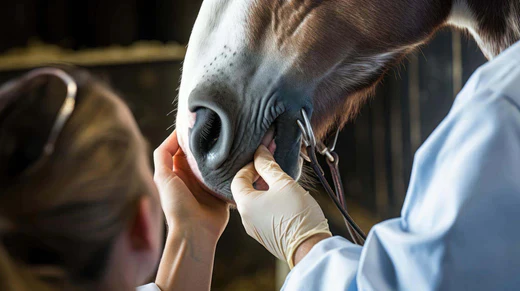The beauty and grandeur of horses often mask the underlying vulnerabilities these majestic creatures can face. One of the most insidious threats to equine health comes from parasites in horses. These internal invaders, often invisible to the naked eye, can wreak havoc on a horse’s well-being if not diagnosed and treated timely. But how can one accurately pinpoint the presence of these “internal parasites in horses”? Enter the world of laboratory data.
This article will highlight the indispensable role that laboratory diagnostics play in detecting and understanding “parasites in horses” and “internal parasites in horses”. By delving into the science and significance behind these tests, we aim to equip horse owners and enthusiasts with the knowledge to ensure the utmost health for their equine companions. Join us as we venture into the microscopic realm of equine health and explore the powerful tools at our disposal.
Diagnosing Parasites in Horses
Parasitic infestations are a common cause of intestinal diseases in horses**, with various parasites like large strongyles (Strongylus vulgaris, Triodontophorus) and small strongyles (Cyathostomum) leading to symptoms like weight loss, abdominal pain, and diarrhea. However, relying on clinical signs alone may not provide a precise diagnosis. This article highlights the importance of utilizing laboratory data to confirm and understand the extent of parasitism accurately.
Hematological Clues to Parasitism
Chronic intestinal inflammation due to parasitic infestations often results in nonregenerative anemia and hyperglobulinemia in horses. Nonregenerative anemia indicates the body’s inability to produce sufficient red blood cells to replace those lost or destroyed. Hyperglobulinemia signifies an increase in globulin levels, a type of protein in the blood, which is a response to the presence of parasites. In some cases, regenerative anemia may occur, characterized by increased red blood cell production by the bone marrow. Reduced serum protein concentration might also be observed. Surprisingly, eosinophilia, an increase in eosinophils (a type of white blood cell), is not a common response to parasitic infestations in horses.
Secondary Indicators of Parasitism
Severe illness caused by parasitism can affect a horse’s food and water intake, leading to hemoconcentration—a condition where the blood becomes more concentrated due to decreased fluid volume. Prerenal azotemia, an increase in blood urea nitrogen (BUN) and creatinine levels due to decreased kidney function, may also develop. Additionally, hypokalemia, indicating low potassium levels in the blood, may be present. These conditions serve as secondary indicators of parasitism and should be monitored closely.
Complications Arising from Inflammation
Parasitism-related intestinal or colonic wall inflammation, known as colitis, further complicates the clinical picture. Inflammation can result in the absorption of endotoxins, toxic substances produced by certain bacteria. Consequently, laboratory findings may include neutropenia (a decrease in neutrophils, a type of white blood cell), a left shift (an increase in immature neutrophils), toxic changes in white blood cells, elevated plasma fibrinogen (a blood clotting protein), and intestinal protein loss. These additional laboratory indicators contribute to the evidence of parasitism in horses.
In Conclusion
Laboratory data interpretation plays a vital role in confirming and comprehending the extent of parasitism in horses. By analyzing parameters such as anemia, globulin levels, eosinophilia, and various other indicators, veterinarians can make more informed decisions regarding the management and treatment of these cases. Laboratory data provides valuable insights into the horse’s immune response, overall health status, and potential complications associated with parasitic infestations.



